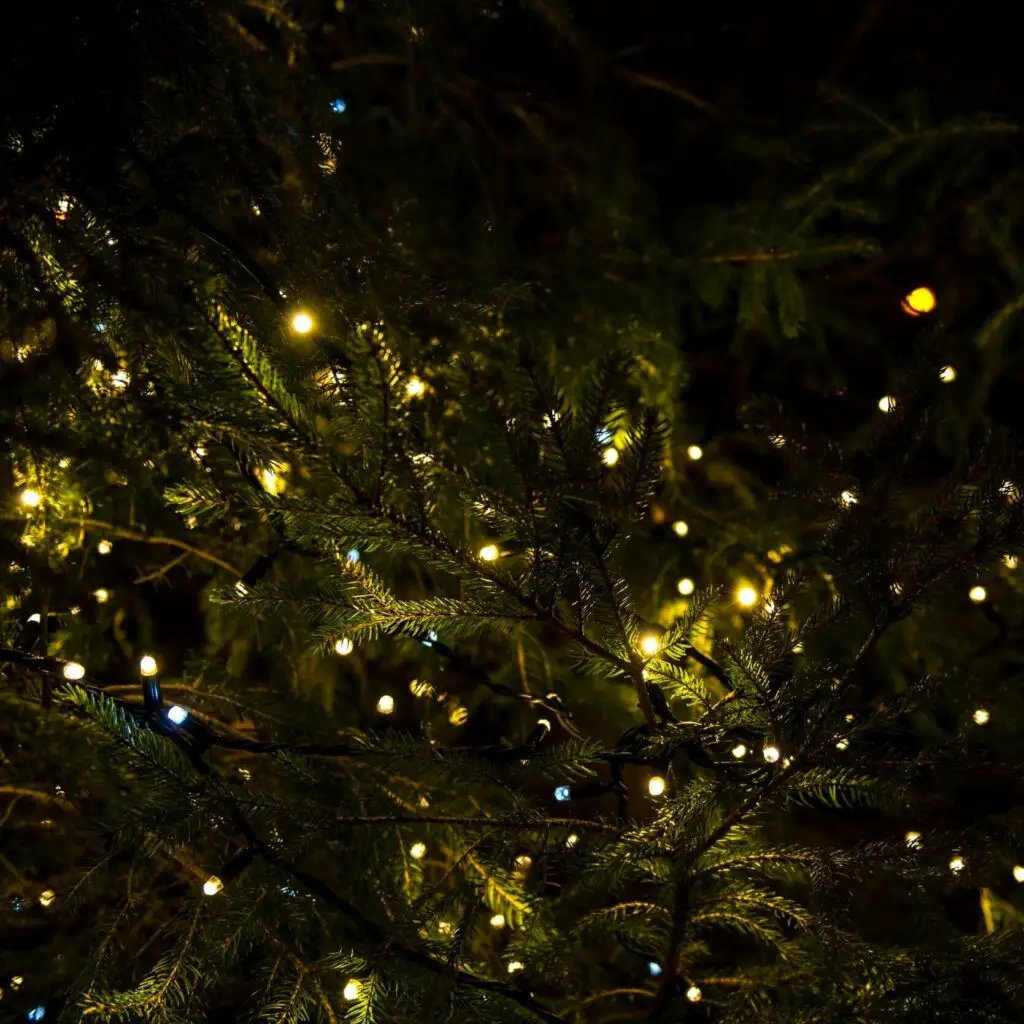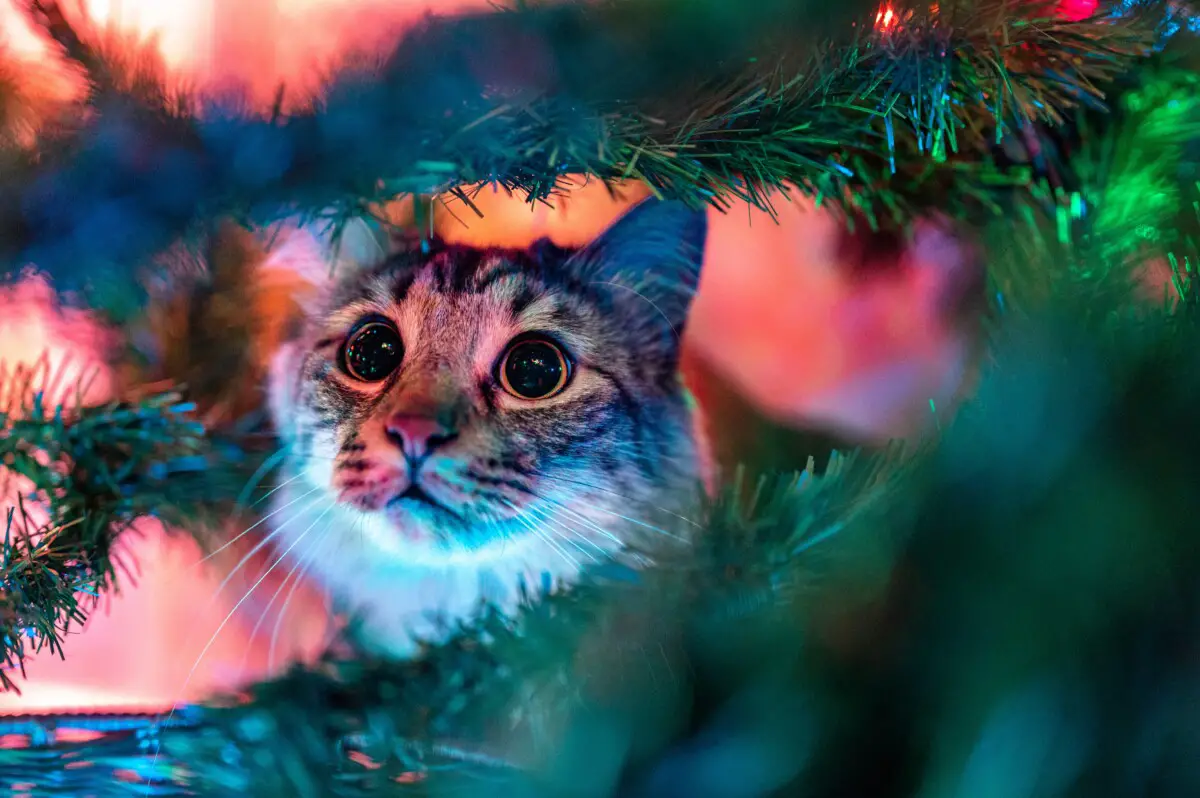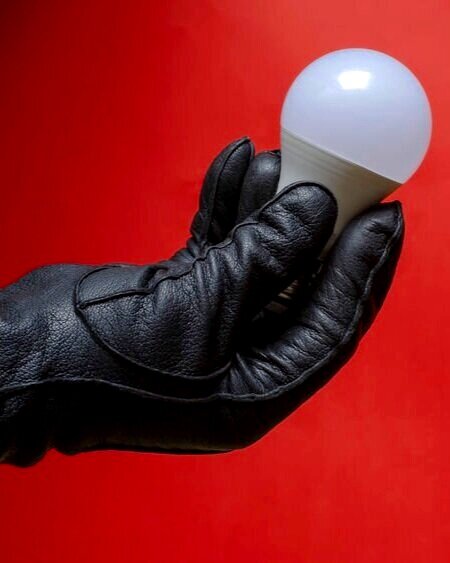Can You Use Indoor Christmas Lights Outside?
During the Christmas holidays, it is a very common tradition to hang up various decorations and lights in order to create a nice holiday atmosphere. That being said, there are a few precautions you should take when it comes to your Christmas lighting. One precaution in particular about this is to make sure you don’t use indoor lights outside.
Using indoor Christmas lights outside can be a major risk as they can cause short circuits when placed outside, which will not only cause them to break but can lead to a fire starting. This is because they are not built to withstand the outside elements, which can cause them to fail when put under those conditions.
With that said, we will now dig deeper into why this is and what causes this to happen.

The Difference Between Indoor And Outdoor Christmas Lights
So what exactly is the difference between these two categories of Christmas lights? As previously mentioned, the main reason why they are so different is that they are built to withstand different climates.
Most indoor Christmas lighting is meant to go on and around the Christmas tree, meaning that they are designed to be safe under conditions. These conditions mainly entail a lower humidity with fewer cooling options and a generally higher temperature, meaning that their main focus is put towards heat management and making sure they don’t cause fires.
Outdoor lights however are built for different conditions. The outside during winter is generally cold and pretty humid, which means that they are instead focused on having good capsulation and protection.
This additional protection would normally cause them to overheat in an inside environment, but because they are placed outside in the middle of winter it is reliable to simply count on the ambient temperatures to keep it cool enough.
IP Classification
While we’ve described the differences in outdoor and indoor Christmas lights it can be good to know the numerical values that actually sets them apart. This numerical value is mainly its IP classification.
IP (Ingress Protection) classification is a simple number labelling system that describes how well a product tolerates dust and water. This system has ratings from IP00 to IP68, where the first number describes its protection against dust and the second against water.
| Ingress Protection (IP) | First Number (Dust) | Second Number (Water) |
|---|---|---|
| 0 | No Protection | No Protection |
| 1 | Protection against solid objects over 50mm in diameter | Protection against dripping water |
| 2 | Protection against solid objects over 12mm in diameter | Protection against dripping water at an angle of 15° from its normal position |
| 3 | Protection against solid objects over 2,5mm in diameter | Protection against water spraying at any angle up to 60° |
| 4 | Protection against solid objects over 1mm in diameter | Protection against water splashes against the enclosure from any direction |
| 5 | Limited ingress protection against dust | Protection against water projected by a nozzle against enclosure from any direction |
| 6 | Total protection against dust | Protection against water projected in powerful jets against the enclosure from any direction |
| 7 | X | Protection against water submersion up to 1 meter (3 ft 3 in) |
| 8 | X | Protection against long periods of submersion and pressure |
Some common IP ratings are IP20 for general-purpose inside usage and IP44 for general-purpose outside use. Almost every mechanical casing or electric enclosure has an IP rating written somewhere on the enclosure or on the packaging it came with.
This is one of the main reasons why indoor Christmas lights are not suitable at all for the outside environment.
Indoor Christmas lighting is usually built to keep solid objects out and not excessive water/moisture, meaning they are likely to have a rating of only IP20. This is absolutely not safe for outside use since they are not built to withstand the potential water exposure the outdoors provide.
However, if you find yourself with a Christmas decoration with an IP of IP44 or more, it is possible that you have a dual-purpose Christmas light, which can be used both inside and outside. If this is the case you should be safe to use it outside assuming that the enclosed casing is still of good quality.
Wire Durability
While IP classification deals with the actual enclosed casing of electrical applications, it doesn’t deal with the wiring which normally comes out the back of it.
However, this is not usually an issue since manufacturers realize that it is important to have durable cables for IP44 casings and above, since they are meant for harsher environments than IP20’s.
That being said, the durability of the wires is also a point in which indoor Christmas lights fail to be suitable for usage outdoor.
What Will Happen If You Use Indoor Christmas Lights Outside?
Now that we have talked about why indoor Christmas lights shouldn’t be used outside, what will actually happen if you decide to do it anyway?
The risks of using indoor Christmas lighting outside are many, but the main risk involved is that water/moisture will make its way into the electrical parts of the lights. If this happens it is likely that the water will start to conduct the electrical current when it shouldn’t, which will result in a short circuit.
Short circuits happen when the electrical current finds a way to get from point A to point B without passing through the electrical load in question, which in this case is a small light bulb. When this happens the total electrical resistance in the circuit will be lowered, which according to Ohms law will cause the size of the current to increase.
With every electrical current, there is heat generation and the larger the current is the more heat is generated. This means that in a worst-case scenario, it is possible for a short circuit to get hot enough to catch fire.
While this should be avoided at all costs, this isn’t always how it happens. Most of the time it will simply trip the fuse or the earth fault circuit breaker.
This by itself is not particularly dangerous since this means that the electrical system is detecting errors, which in turn means that you can identify the issue if the switch keeps turning off after turning it back on again. However, it can be quite an annoying issue but is far better than causing a fire.
One thing to note, however, is that in order for the fuse to trip the current needs to exceed a certain size. This leaves some room for the current to be big enough to become a fire hazard but also not big enough to trip the breaker.
Can You Use Outdoor Christmas Lights Inside?
We have now answered what the risks are of using indoor Christmas lights outdoors, but what about the other way around? Are there any dangers in using outdoor Christmas lights inside?
While outdoor Christmas lighting is generally safer the indoor equivalents, it should not be used indoors unless the product description says it is okay to do so. While outdoor lighting is built to be more robust and more durable than indoor lighting, it will also significantly limit its options for heat dissipation.
This means that if you were to wrap outdoor graded lighting around your Christmas tree, there is a possibility that the tree might catch on fire due to its heat management being compromised with the environment it has now been put in.
This is not as likely to happen as it is for indoor lighting to have a short circuit outside, but it is a risk that should definitely be accounted for before deciding to use your lighting.
Conclusion
So, what exactly should you take away from this? The main takeaway here is that you should always make sure to use your indoor and outdoor Christmas lighting for their intended use.
Using them in places where they shouldn’t be can in the worst cases lead to fires or in the best case lead to the lighting breaking peacefully.
This being said, if you have Christmas lights that are labelled for both inside and outside use it should be safe to put them in either one of them.
The last tip I’d like to give is to store your Christmas lighting in 2 separate categories; indoor and outdoor lighting. This way you don’t have to question whether or not your lighting is made for indoor or outdoor use every year and potentially risk causing unnecessary fire hazards.





